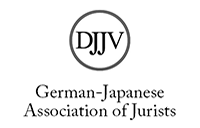Rescuing Victims and Rescuing TEPCO: A Legal and Political Analysis of the TEPCO Bailout
Abstract
The accident at the Fukushima Dai-ichi Nuclear Power Plant following the 11 March earthquake in Japan has caused enormous radiation contamination in the eastern part of Japan, and TEPCO (Tokyo Electric Power Co., Inc.), which operates the plant, is now liable for at least trillions of yen of damages as a tort feasor. The amount of damages is so large that it is expected TEPCO by itself cannot afford it. Therefore, other stakeholders, such as TEPCO clients, financial institutions and tax payers (via the national government), need to provide the necessary funds for the victims. I analyse the present situation of TEPCO and the victims both from a legal perspective and from a political perspective. First I argue that the most desirable solution is to indemnify TEPCO’s burden from a legal perspective. Then the most desirable solution is compared with the actual one chosen by the Japanese government. Finally, the reason why the actual solution has deviated from the most desirable one is discussed from a political perspective. Interest groups, such as financial institutions and the management/employees of TEPCO, have influenced the policy formation process. However, since the bailout plan of TEPCO has become politically salient, the government strategy is fluctuating between whether it should accept the arguments of interest groups or appease the public anger against TEPCO.Downloads
Published
2012-10-01
How to Cite
H. Morita, Rescuing Victims and Rescuing TEPCO: A Legal and Political Analysis of the TEPCO Bailout, ZJapanR / J.Japan.L. 34 (2012), 23–41.
Issue
Section
Conference






